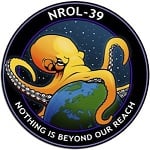I’m a tech interested guy. I’ve touched SQL once or twice, but wasn’t able to really make sense of it. That combined with not having a practical use leaves SQL as largely a black box in my mind (though I am somewhat familiar with technical concepts in databasing).
With that, I keep seeing [pic related] as proof that Elon Musk doesn’t understand SQL.
Can someone give me a technical explanation for how one would come to that conclusion? I’d love if you could pass technical documentation for that.
The statement “this [guy] thinks the government uses SQL” demonstrates a complete and total lack of knowledge as to what SQL even is. Every government on the planet makes extensive and well documented use of it.
The initial statement I believe is down to a combination of the above and also the lack of domain knowledge around social security. The primary key on the social security table would be a composite key of both the SSN and a date of birth—duplicates are expected of just parts of the key.
If he knew the domain, he would know this isn’t an issue. If he knew the technology he would be able to see the constraint and following investigation, reach the conclusion that it’s not an issue.
The man continues to be a malignant moron
The initial statement I believe is down to a combination of the above and also the lack of domain knowledge around social security. The primary key on the social security table would be a composite key of both the SSN and a date of birth—duplicates are expected of just parts of the key.
Since SSNs are never reused, what would be the purpose of using the SSN and birth date together as part of the primary key? I guess it is the one thing that isn’t supposed to ever change (barring a clerical error) so I could see that as a good second piece of information, just not sure what it would be adding.
Note: if duplicate SSNs are accidentally issued my understanding is that they issue a new one to one of the people and I don’t know how to find the start of the thread on twitter since I only use it when I accidentally click on a link to it.
https://www.ssa.gov/history/hfaq.html
Q20: Are Social Security numbers reused after a person dies?
A: No. We do not reassign a Social Security number (SSN) after the number holder’s death. Even though we have issued over 453 million SSNs so far, and we assign about 5 and one-half million new numbers a year, the current numbering system will provide us with enough new numbers for several generations into the future with no changes in the numbering system.
Take this with a grain of salt as I’m not a dev, but do work on CMS reporting for a health information tech company. Depending on how the database is designed an SSN could appear in multiple tables.
In my experience reduplication happens as part of generating a report so that all relevant data related to a key and scope of the report can be gathered from the various tables.
A given SSN appearing in multiple tables actually makes sense. To someone not familiar with SQL (i.e. at about my level of understanding), I could see that being misinterpreted as having multiple SSN repeated “in the database”.
Of all the comments ao far, I find yours the most compelling.
Theoretically, yeah, that’s one solution. The more reasonable thing to do would be to use the foreign key though. So, for example:
SSN_Table
ID | SSN | Other info
Other_Table
ID | SSN_ID | Other info
When you want to connect them to have both sets of info, it’d be the following:
SELECT * FROM SSN_Table JOIN Other_Table ON SSN_Table.ID = Other_Table.SSN_ID
EDIT: Oh, just to clear up any confusion, the SSN_ID in this simple example is not the SSN itself. To access that in this example query, it’d by SSN_Table.SSN
This is true, but there are many instances where denormalization makes sense and is frequently used.
A common example is a table that is frequently read. Instead of going to the “central” table the data is denormalized for faster access. This is completely standard practice for every large system.
There’s nothing inherently wrong with it, but it can be easily misused. With SSN, I’d think the most stupid thing to do is to use it as the primary key. The second one would be to ignore the security risks that are ingrained in an SSN. The federal government, being large as it is, I’m sure has instances of both, however since Musky is using his possy of young, arrogant brogrammers, I’m positively certain they’re completely ignoring the security aspect.
Yeah, no one appreciates security.
I probably overused that saying to explain it: ‘if theres no break ins, why do we pay for security? Oh, there was a break in - what do we even pay security for?’
It’s more than just SQL. Social Security Numbers can be re-used over time. It is not a unique identifier by itself.
i’ve heard conflicting reports on this, i have no idea to what degree this is true, but i would be cautious about making this statement unless you demonstrate it somehow.
As read on wikipedia ( https://en.wikipedia.org/wiki/Social_Security_number ) the format only allows +/- 100k numbers per area code ( which is also limited to 999 codes? ), so over time you are forced to reuse some codes. In total the format allows 99m unique codes, and the us currently has 334mil people sooooo :')
On June 25, 2011, the Social Security Administration changed the SSN assignment process to “SSN randomization”,[36] which did the following:
The Social Security Administration does not reuse Social Security numbers. It has issued over 450 million since the start of the program, about 5.5 million per year. It says it has enough to last several generations without reuse and without changing the number of digits. https://www.ssa.gov/history/hfaq.html
evidently they must be doing something else on the backend for this to be working, assuming there are quite literally 100M numbers, which is going to be static due to math, obviously, but they clearly can’t be reassigning numbers to 3 people on average at any given time, without some sort of external mechanism.
There are approximately 420 million numbers available for assignment.
https://www.ssa.gov/employer/randomization.html
that certainly doesnt seem like it would support several generations, possibly at our current birth rate i suppose.
DDG AI bullshit tells me that there are a billion codes. https://www.marketplace.org/2023/03/10/will-we-ever-run-out-of-social-security-numbers/ this article says it’s 1 billion
https://www.ssn-verify.com/how-many-ssns
this website also lists it as approximately 1 billion.
I think i see the change. They are mentioning the ssn is 9 numbers long, which is 1 longer than the 3-3-2 format wikipedia mentions. That does mean its around 999mil numbers, which ye allows for a few generations ( like, 1 or 2 lol )
yeah, that sounds about right, ok i think we’ve figured this one out now. lol
“The government” is multiple agencies and departments. There is no single computer system, database, mainframe, or file store that the entire US goverment uses. There is no standard programming language used. There is no standard server configuration. Each agency is different. Each software project is different.
When someone says the government doesn’t use sql, they don’t know what they are talking about. It could be refering to the fact that many government systems are ancient mainframe applications that store everything in vsam. But it is patently false that the government doesn’t use sql. I’ve been on a number of government contracts over the years, spanning multiple agencies. MsSQL was used in all but one.
Furthermore, some people share SSNs, they are not unique. It’s a common misconception that they are, but anyone working on a government software learns this pretty quickly. The fact that it seems to be a big shock goes to show that he doesn’t know what he is doing and neither do the people reporting to him.
Not only is he failing to understand the technology, he is failing to understand the underlying data he is looking at.
Yeah, obviously ol’ boy is tripping if he thinks SQL isn’t used in the government.
Big thing I’m prying at is whether there would be a legitimate purpose to have duplicated SSNs in the database (thus showing the Vice Bro doesn’t understand how SQL works).
I’m not aware of any instance where two people share an SSN though. The Social Security Administration even goes as far as to say they don’t recycle the SSNs of dead people (its linked a couple times in other comments and Voyager doesn’t let me save drafts of comments, I’ll make an edit to this comment with that link for you).
Can you point me to somewhere showing multiple people can share an SSN?
Edit: as promised: The Social Security FAQ page
Assuming the whole “duplicate SSN” thing isn’t just a complete fabrication, we have no idea what table he was even looking at! A table of transactions e.g. would have a huge number of duplicate SSNs.
The fact that SSN aren’t singular identifiers has been public knowledge for quite a while. ID analytics has shown in over a decade of studies that some people have multiple SSN attached to their name, while some (over five million) SSN are used by three or more living individuals. If you search “ID analytics SSN” you’ll find loads of articles reporting on this dating back to 2010 and a bit before.
Was trying to find something from the SSA itself on the topic, but didn’t turn anything useful up on the quick.
Here is a link for the lazy on the topic: https://www.nbcnews.com/technolog/odds-someone-else-has-your-ssn-one-7-6C10406347
I think a lot of comments here miss the mark, it’s not really just about stating the gov does not use SQL or speculation regarding keys.
Deduplication is generally part of a compression strategy and has nothing to do with SQL. If we’re being generous he may have been talking about normalization, but no one I have ever met has confused the two terms (they are distinctly different from an engineering perspective).
There are degrees of normalization too, so it may make total sense to normalize 3NF (third normal form) rather than say 6NF depending on the data.





